We Run Elaborate Tests On BMS In Design Stage: Puneet Arora
- By 0
- June 17, 2020
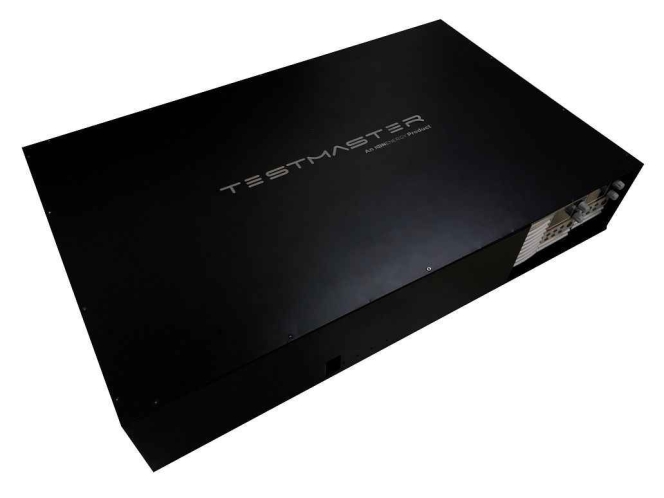

Q: What is your contribution to testing new energy vehicles – Battery Electric Vehicles and Hybrids? Please elaborate on the testing equipment you have for these vehicles?
Arora: As a B2B startup that enables its customers to maximize the capacity of the battery pack, and improve battery life and safety, we run elaborate tests on Battery Management Systems on all of our BMS designs. These BMSes have been deployed by ION’s customers on a fleet of batteries that go inside two / three-wheelers, passenger and commercial vehicles, and industrial electric vehicles. Our cloud analytics platform, Edison, helps our customers visualize the data coming out of these tests and generate insights. In a bid to counter the challenge of costly industrial equipment, we have developed battery emulators, end of line testing equipment and HIL (Hardware-in-the-loop) setup, in house at about a minimal 10 percent cost of the commercial market rate. We have also built a gaming engine based simulation engine called the ‘Ghost Rider’ that runs simultaneously with our battery models. The simulation helps us integrate our BMS algorithms to vehicles models and monitor the performance of those models in life like situations.
Q: Can you tell us briefly about your overall portfolio of BMS testing equipment and a bit about your company?
Arora: Quality Assurance (QA) and Testing are the most important phases in the life cycle of BMS since the success of this phase dictates the level of safety and the management of the battery’s life. As a startup, we have adopted a lean and creative approach with our testing methodologies. We have a number of indigenously developed tools and software for testing of our batteries. Once the hardware design of the BMS is finalized, the prototypes are validated for their basic functionalities. The prototypes are further optimized based on the functionality and additional features that develop the hardware. When all the modifications are completed, the BMS is validated for its functionalities at different environmental conditions. Based on the data collected in the previous step an ‘operating range’ is defined.
Similar to the hardware, the software is also tested on the prototype BMS hardware. Based on the outcomes and new requirements, the iterations are made to tailor the firmware for its optimum performance and management of battery life and safety. Once the desired results are obtained, the firmware is finalized and deployed in the BMS. The prototype is then sent to external independent laboratories for EMI / EMC tests, basis whose clearance, the hardware and the firmware are again validated, and the design is finalized. In the manufacturing stage, ION Energy conducts as Automated Optical Inspection (AOI) testing is more reliable than manual visual inspection. In the final stage of the manufacturing process, the Design for Manufacturing (DFM) files are used for the component assembly process. Testing is necessary to avoid any incorrect component placement issues. Testing during this stage is typically more intensive than during the fabrication phase.
End-of-Line Testing measures and checks the functionality of ION’s battery management systems. The key factors taken into consideration at ION are high test quantity, test completion and low system with upgrade costs. At ION, we have built an automated testing platform called the ION Testmaster, built specifically for performing automated Functional Circuit Test (FCT) on ION’s BMSes. In the latest update, the ION Testmaster is interfaced with Edison Analytics for accurate and real-time inventory management using the MNP/serial number of the DUT, in this case, the BMS.
Q: A lot of players claim that they build technologies to enhance the life and performance of lithium-ion batteries. What is the USP of ION Energy?
Arora: It's worth noting that oftentimes when organizations emphasize on enhancing the life and performance of a battery, reliability takes a backseat. In a market like India that is still in a nascent stage, ION Energy is one of the very few players that offers reliable and tested solutions, making it our USP. ION Energy is an advanced battery management and intelligence platform that was born out of the desire to tackle the threat of climate degradation by enabling a much more environment-friendly mobility solution. Founded in 2016, ION’s mission is to accelerate Earth's transition to an all-electric planet. We are doing this with a focus on building technology that improves the life and performance of lithium-ion batteries, which power electric vehicles and energy storage systems.
ION’s full-stack solution blends advanced electronics and machine learning with deep domain expertise in energy storage. ION’s disruptive battery intelligence platform - Edison Analytics leverages battery data, software analytics, and ML to significantly improve battery performance and extend battery life by up to 40 percent. Battery Makers & OEMs around the world use ION’s platform to optimize their battery management systems (BMS) and build world-class batteries. ION Energy is leaps ahead when it comes to leveraging data. In a bid to enhance life and performance, ION Energy has a fully integrated stack with Battery Design Engineers, BMS Design Engineers and Software Engineers learning from insights captured by our cloud platform - Edison.

Q: In Evs the packaging is key and anything lighter is the most sought after by the OEMs. What are the contributions from your end on these expectations?
Arora: The battery usually comprises 25-30 percent of the weight of electric vehicles. There is always a tradeoff between the weight and size of the battery, vis-a-vis the range it offers. A bigger battery offers a higher range, but it also adds to the weight of the vehicle - reducing its energy efficiency. It is crucial to achieve the right balance in this trade off - and that needs a deep knowledge and understanding of the application, usage and the environment of the battery packs. At ION Energy, we have tools that can help OEMs find the right size for its battery packs.
Q: How do you see the increasing electronics and vehicles becoming more connected in EV space too? What sort of solutions do you give? Please elaborate.
Arora: The global automobile industry is on the brink of a major transformation. The Global Connected Car Market size is projected to reach USD 212.7 billion by 2027, from an estimated value of USD 42.6 billion in 2019, at a CAGR of 22.3 percent - as predicted by Markets and Markets. Technology is driving this shift, shaped by demographic, regulatory, and environmental pressures. Other factors include - consumer tech companies entering the automotive world, as software and other technologies, are taking a pivotal position in the future of automobiles. These businesses want to focus on design, ease of use, better service and extended battery life to bring new kinds of innovation to the field
Shared Asset Utilization requires companies to leverage advanced IoT, Battery Management & Driver Profiling to improve asset sweating, protect the lifetime of the asset, and ensure financial viability. This will have powerful effects beyond the auto industry. Insurers, for example, will have new ways to monitor driver behavior, reward good drivers, and distribute costs to bad ones. Companies can better connect idle cars with customers that need them. Continuously improving UX is becoming a norm, not only in mobile phones but also EVs. OTA updates that extend range, improve charging time and boost speed are a reality today. Companies with the technical capability to package world-class technology, UX and affordable pricing will win in the future of mobility. The growing battery swapping ecosystem for two / three-wheelers in Asia is one of the best examples of the shift in the transport sector brought about by EVs and connected electronics. It gives end-users the option to lease batteries and pay per km, instead of paying all the battery costs upfront. This is only possible because of connectivity between the batteries, the vehicles, the users and the swapping station.
Shared utilisation of batteries is possible only because of integrated battery management and telematics functions. It is important to track the location, usage and the state of the battery - all at the same time - to be able to charge users accordingly. ION has a lot of experience in building integrated Battery Management and Telematics Units for batteries and swapping stations. Our BMSes have GPS sensors and LTE modems integrated with battery management functions. We are able to send real time data to our cloud that enables monitoring and optimization of asset utilization.
Our BMSes - FS-CT, FS-LT, and FS-XT - are equipped with on-board memory storage to log every data point of the battery pack collected by the BMS, up to 20 years of historical battery data. Normally this would lead to an enormous amount of data, but we've developed compression algorithms tailored for battery data acquisition. The BMS records all physical parameters, events, errors relating to the performance of the battery pack. Our cloud-connected battery intelligence platform, Edison Analytics, allows engineers to access this data and gain insights into the life and performance of the battery. (MT)
- Indo-German Partnership for Green and Sustainable Development Goal
- Christine Toetzke
- Federal Ministry for Economic Cooperation and Development
India And Germany Discuss Electric Mobility Ecosystem Transformation
- By MT Bureau
- December 05, 2025
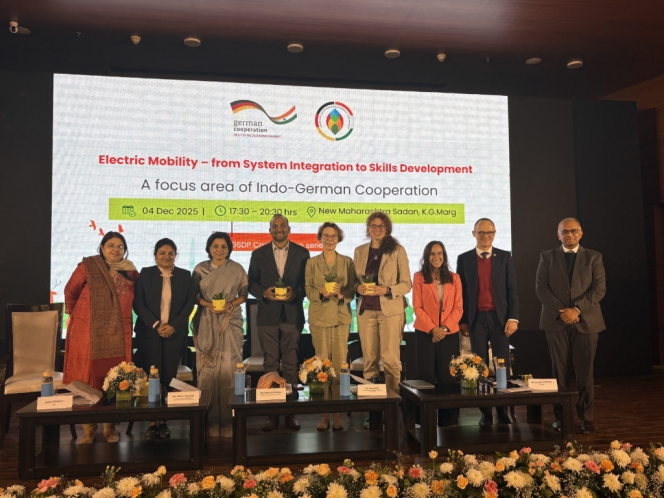
India and Germany convened a high-level roundtable under the Indo-German Partnership for Green and Sustainable Development (GSDP) to discuss solutions for advancing electric mobility ecosystems. The ninth edition of the GSDP Conversation Series focused on ‘Electric Mobility: From System Integration to Skills Development’.
The roundtable brought together senior officials from key central ministries, state and city administrations, public transport undertakings, distribution companies (DISCOMs), industry leaders and international partners to address the shift from fragmented pilots to a coordinated, ecosystem-wide transformation.
The discussion underlined that India can only achieve its electric mobility targets through integrated planning across various sectors, including renewable energy, transportation, manufacturing, finance and skills. Stronger coordination among the central government, states and cities was also noted as key to successful implementation.
The participants prioritised five key themes to shape the next phase of India’s e-mobility transition:
- Multimodal Electrification: Integrating metro, bus, shared mobility and last-mile services into a unified electric transport system.
- Charging Infrastructure and Grid Readiness: Enhancing coordination with DISCOMs, ensuring land and power capacity, standardising charging systems and strengthening battery safety and circularity.
- Financing and Procurement: Improving bankability, payment security, risk sharing, contract structures and financial instruments for e-buses and commercial EVs.
- Skills and Gender Inclusion: Addressing shortages in EV engineering, charger installation, battery management, safety and digital mobility services while expanding opportunities for women.
- Indo-German Collaboration: Advancing cooperation in areas such as grid management, multimodal planning, standardisation, battery circularity and vocational training.
Christine Toetzke, Director General for Asia, Latin America, Middle East & Eastern/Southeastern Europe, Federal Ministry for Economic Cooperation and Development (BMZ), Germany, said, “Germany and India share a long-standing partnership rooted in trust, ambition, and a shared vision for a greener future. The Green and Sustainable Development Partnership is central to our international engagement, reflecting our joint commitment to make development both climate-compatible and socially inclusive. Electric mobility is not merely a technological shift; it is a transformation of how our societies move, how we design our cities, and how we create opportunities for future generations. As India advances this transition at a remarkable scale and speed, Germany stands ready to support with system-level planning, vocational skills development and innovation in areas such as battery management and circular economy solutions. Our cooperation is a long-term investment in cleaner air, safer mobility, and more equitable access to opportunity for all.”
Senior officials emphasised the importance of aligning national schemes with local implementation capacity, noting that India now requires system-wide approaches that combine depot electrification, grid readiness, multimodal integration, transparent procurement models and a skilled workforce. The dialogue reaffirmed the commitment of both nations to accelerate clean, efficient and inclusive mobility solutions.
- Hagerty UK
- Vehicle Excise Duty Exemption
- VED Exemption
- Historic & Classic Vehicles Alliance
- Classic Cars
UK Chancellor Maintains Vehicle Excise Duty Exemption For Classic Cars
- By MT Bureau
- November 27, 2025

The UK's cherished classic car community can finally breathe a collective sigh of relief. The decisive action by Chancellor Rachel Reeves in the Autumn Budget to maintain the Vehicle Excise Duty (VED) exemption for vehicles over 40 years old has ended a prolonged period of uncertainty, securing a stable future for this vital sector. Mark Roper, Managing Director of Hagerty UK, welcomed this clarity, noting that the confirmed freeze on fuel duty further solidifies a supportive environment for owners. He underscores that this is a significant win for the GBP-7.3-billion industry that supports over 100,000 jobs and contributes GBP 3 billion annually to the UK economy, all while championing an inherently sustainable form of motoring.
This perspective on sustainability is reinforced by Dale Keller, CEO of the Historic & Classic Vehicles Alliance (HCVA), who affirms that the tax exemption logically aligns with environmental objectives. Classic vehicles, preserved as moving heritage, have a negligible lifecycle carbon footprint compared to new manufacturing and are driven infrequently. The original principle of the exemption remains valid, as applying a modern tax to these rarely used assets would be inequitable.
Alongside the VED news, the Chancellor confirmed the continuation of the MOT exemption for classic cars, though this will remain under review. On this point, Roper of Hagerty UK strikes a note of caution, observing that many within the industry advocate for an annual roadworthiness check. He notes that a great number of responsible classic owners voluntarily submit their vehicles for an MOT each year, valuing the independent assurance of safety and mechanical integrity it provides.
For Hagerty UK, as a specialist insurer deeply embedded in this world, the government’s affirmation is a powerful endorsement of the sector's cultural and economic value. Through its vibrant Clubhouse at Bicester Heritage and unique events like RADwood, Hagerty is actively fostering this passionate community. Similarly, the HCVA continues its mission to protect and promote the diverse ecosystem of specialists, restorers and businesses that form the backbone of this multi-billion-pound industry, ensuring its legacy for generations to come.
Mahindra Racing Extends Formula E Involvement With GEN4 Manufacturer Commitment
- By MT Bureau
- November 26, 2025
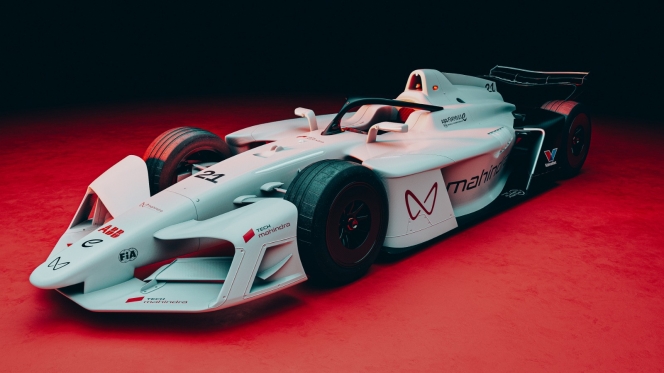
Mahindra Racing has solidified its long-term future in electric motorsport by confirming its manufacturer commitment to the GEN4 era of the ABB FIA Formula E World Championship, starting in 2026/27. This announcement, made during the unveiling of its new M12Electro race car in India, extends a relationship that began in 2013 when Mahindra stood as both a founding team and the first OEM to join the all-electric series.
The team's current trajectory underscores the significance of this pledge. Following a dramatic 18-month transformation under CEO and Team Principal Frederic Bertrand, Mahindra Racing has evolved from a backmarker into a consistent front-runner. This resurgence was powered by the redesigned M11Electro, in which drivers Nyck de Vries and Edoardo Mortara collectively secured five podium finishes in Season 11, catapulting the squad to a stellar fourth place in the world championship. The newly launched M12Electro is the intended vehicle to maintain this status as a top-five contender and a regular threat for podium positions in the forthcoming season.
The technical landscape for GEN4 promises to further electrify the sport. The next-generation cars will boast a peak race power of 450 kw, with a potent 600 kw available in ATTACK MODE to empower aggressive overtaking. Enhanced strategic possibilities will come from a race energy capacity of up to 55 kWh and a remarkable 700 kw of regenerative braking. In a continued commitment to sustainability, the GEN4 chassis will be produced from 100 percent recyclable materials and will feature two distinct aerodynamic configurations – high-downforce for qualifying and low-downforce for races – to optimise performance.
Mahindra's ambition is to leverage this new regulatory chapter to build on its renewed momentum, chase incremental gains and establish itself as a confirmed championship contender against elite manufacturers like Porsche and Jaguar. This competitive platform also serves a broader purpose, aligning with the Mahindra Group’s sustainability initiatives. The team, the first in Formula E to earn the FIA’s Three-Star Sustainability Accreditation, has embarked on its ‘Planet Positive’ programme. This initiative is dedicated to driving positive impact in communities and economies, accelerating climate solutions and using the intersection of sport and technology as a catalyst for a better future.
R Velusamy, Chairman, Mahindra Racing, said, "Mahindra Racing has always been a symbol of our commitment to the Race to Road journey – where cutting-edge innovation on the track directly shapes the clean, intelligent and high-performance mobility solutions we deliver to customers. Formula E is a powerful platform for innovating new technology, giving us the ability to experiment, learn and advance electric powertrain efficiency, sustainable materials and software intelligence. As we step into the GEN4 era, our ambition only grows stronger. Continuing this journey till 2030 is a testament to our belief in the sport, in electrification and in India’s role in leading global sustainable mobility. We are proud to champion this future, and GEN4 represents an exciting new chapter for Mahindra Racing and the Mahindra Group.”
Frederic Bertrand, Team Principal, Mahindra Racing, said, “I’m delighted to share this announcement that Mahindra Racing will remain in Formula E as a manufacturer for the GEN4 era. As a team, we have been on a fantastic journey over the past two seasons. What we have built and achieved as a group has been exceptional, and with this announcement, we now have the platform to keep growing and developing and achieve even greater success in the future. None of this would be possible without our colleagues across the Mahindra Group. They have bought into the project and the vision, and we will keep working hard to not only make India proud but also showcase exactly why it has the potential to be a major player on the world stage in the automotive and technology industries. Their enthusiasm to ‘Scream Electric’ is hugely inspiring to the whole team, and we will continue to represent them with pride in this next exciting chapter of our Formula E story in the coming years.”
Jeff Dodds, CEO, Formula E, said, “We’re thrilled to confirm Mahindra’s long-term commitment to the GEN4 era of the ABB FIA Formula E World Championship. As one of our founding teams, Mahindra has been with us since the very beginning, consistently championing electric racing and innovation. Their bold vision for sustainable mobility and continued investment in advanced EV technology perfectly align with Formula E’s mission. Mahindra’s enduring presence not only strengthens our position in a key market but also reinforces Formula E’s role as a global platform for driving positive change. We’re excited to see what they’ll achieve in this next chapter of performance and progress.”
Marek Nawarecki, Senior Circuit Sport Director, FIA, said, “Following the GEN4 reveal and the really positive sentiment reported, we are pleased to announce Mahindra as the sixth manufacturer to commit to Formula E’s GEN4 era. This is testament to the relevance of the road map we are implementing in Formula E for OEMs. GEN4 underscores just how far the ABB FIA Formula E World Championship has come since 2014 and we are looking forward to continuing this journey with Mahindra as one of the founding teams and partners.”
Mahindra Charts Aggressive Decade Of Growth Across Auto, Farm, CV And Last-Mile Mobility Businesses
- By MT Bureau
- November 21, 2025
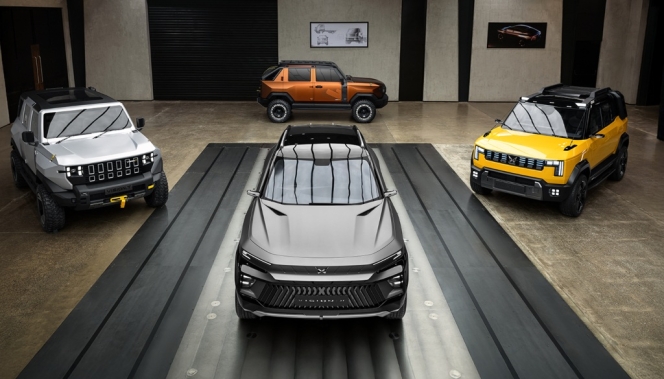
Mumbai-headquartered conglomerate Mahindra Group has unveiled an ambitious long-term roadmap across its core mobility and equipment businesses, detailing plans for accelerated growth in the automotive, farm equipment, commercial vehicle and last-mile mobility segments.
The strategy, presented at its Investor Day 2025, underscores the Group’s intent to leverage India’s expanding economy while deepening global market participation.
Mahindra expects its consolidated automotive business to grow 8x between FY2020 and FY2030, driven primarily by a stronger push in sports utility vehicles (SUVs) and light commercial vehicles (LCVs).
The company aims to become the world’s fastest-growing SUV brand. Its product strategy is rooted in new-age platforms such as INGLO and NU_IQ, enhanced digital architecture under MAIA and Adrenox, and continued investment in safety and performance.
At present, Mahindra holds more than 26 percent revenue share in India’s SUV segment as of the first half of FY2026. Strong consumer traction for models including the Thar, XUV700, XUV3XO and the Born Electric (BE) series is expected to support the company’s international expansion to right-hand-drive and left-hand-drive markets across Europe, Australia, Africa and other regions.
Strengthening leadership in LCV segment
The LCV business, where Mahindra commands 54.1 percent volume share in vehicles under 3.5 tonnes (as of H1 FY2026), is set to be another pillar of growth. The product range has broadened through the Supro, MaXX and Veero platforms, including CNG and electric variants. The company is also preparing for wider adoption of lifestyle pickups, led by the upcoming Global Pik Up.
Mahindra’s LCV strategy emphasises best-in-class total cost of ownership, reduced downtime, enhanced comfort and technology integration, with the segment also targeted for eightfold revenue growth during the decade.
Farm business
Mahindra, the world’s largest tractor manufacturer by volume, has outlined plans for threefold revenue growth in its farm equipment division between FY2020 and FY2030.
The Indian tractor market has continued to shift towards higher horsepower models, particularly in the 40–50 HP range. Mahindra aims to consolidate share in this segment through newer platforms including Yuvo Tech+, Swaraj Protek and Next-Gen ranges. Improvements in crop profitability and a more favourable price environment for tractors are expected to support industry expansion.
Mechanisation levels in India remain uneven, with significant headroom in sowing, crop care and harvesting equipment. Mahindra is expanding its farm machinery portfolio while leveraging its extensive dealer network and manufacturing footprint. The division, already a business exceeding INR 10 billion, is poised for rapid scaling.
Mahindra continues to build presence in key global markets:
- Brazil: 8 percent share in the sub-120 HP category, and about 20 percent in sub-50 HP
- North America: more than 10 percent share in sub-20 HP; upcoming launches to deepen penetration
- ASEAN: early progress with about 4 percent share in pilot territories
Electrification, autonomy, precision agriculture and pay-per-use technology services form the next frontier for Mahindra’s farm business.
Targeting Top-Three Position in ILCVs
Following the acquisition of SML Isuzu, Mahindra is advancing a strategy to be among the top-three player in India’s intermediate and light commercial vehicle (ILCV) market. The domestic CV industry is projected to grow from approximately INR 15,000 billion in FY2025 to nearly INR 20,000 billion by FY2031, supported by infrastructure development, logistics modernisation and GST-driven reforms.
Mahindra aims to expand its presence in ILCVs, while pursuing a selective play in the heavy commercial vehicle category. The strategy benefits from combined advantages across product development, sourcing, aggregates, telematics and network coverage. The company expects up to sixfold revenue growth in its CV business during the decade.
Last-Mile Mobility
Mahindra Last Mile Mobility (MLM) is shaping an aggressive electrification-led growth plan, targeting sixfold revenue expansion and a cumulative one million electric vehicles on the road by 2031. EV sales climbed to 78,678 units in FY2025, led by the Treo series, which remains India’s top-selling electric three-wheeler.
The division has:
- Strengthened its engineering capabilities with a 400-member product development team
- Commissioned a new state-of-the-art manufacturing plant in Telangana
- Expanded production capacity two-fold
- Developed proprietary battery, motor and telematics systems
The product roadmap includes advanced electric three-wheelers and electric four-wheelers tailored for last-mile applications, along with plans to expand exports to more than ten markets. Mahindra’s EV fleet has cumulatively saved over 300 million litres of fuel and prevented more than 185 kilo tonnes of carbon dioxide emissions.
Across all mobility segments, Mahindra’s plan is anchored in product leadership, technology integration, capital discipline and global expansion. A stronger focus on electrification, platform consolidation, digital interfaces, manufacturing efficiency and customer-centric service models is expected to underpin the Group’s growth trajectory.



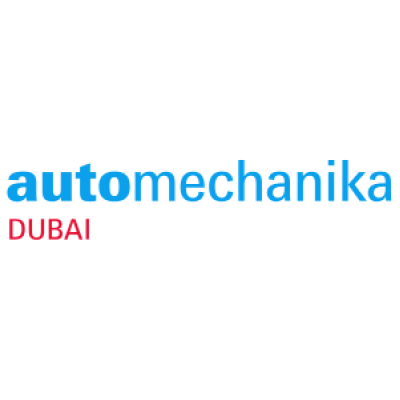


Comments (0)
ADD COMMENT